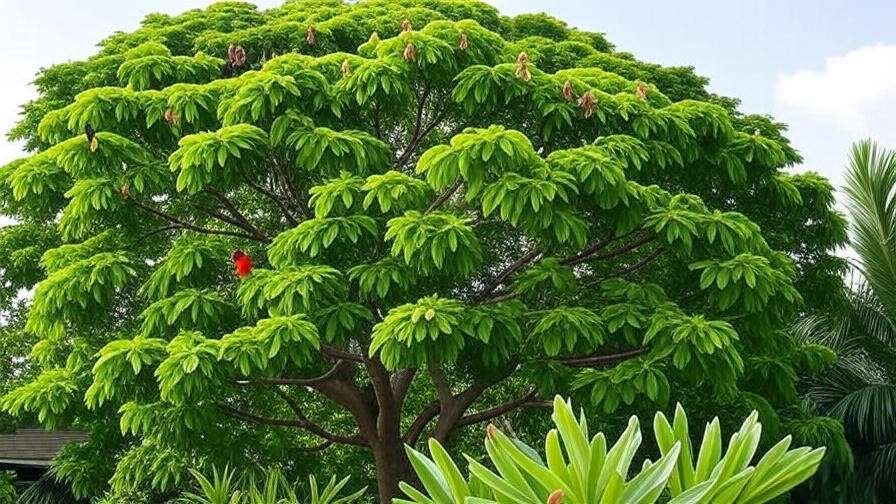Picture a majestic guanacaste tree, its sprawling canopy casting cool shade over your backyard, vibrant seed pods swaying in the breeze, and birds chirping among its branches. Known as Costa Rica’s national tree, the guanacaste tree (Enterolobium cyclocarpum) is a tropical giant that transforms any landscape into a lush, eco-friendly haven. Whether you’re a homeowner dreaming of a statement tree or a gardener passionate about sustainable planting, this guide unlocks the secrets to growing and caring for a thriving guanacaste tree. With insights from tropical horticulture experts and proven cultivation techniques, you’ll learn how to nurture this iconic tree from seed to maturity, creating a legacy for generations. Ready to bring this tropical beauty to life? Let’s dive in! 🌞
1. Understanding the Guanacaste Tree 🌿
1.1 What Is a Guanacaste Tree?
The guanacaste tree, scientifically named Enterolobium cyclocarpum, is a fast-growing, deciduous tree native to Central and South America. Often called the earpod tree, elephant ear tree, or monkey ear tree, it’s celebrated for its broad canopy, unique seed pods resembling ears, and nitrogen-fixing roots that enrich soil. In Costa Rica, it’s a national symbol of resilience and biodiversity, thriving in tropical climates from Mexico to Brazil.
- Height: Can reach 100-130 feet tall with a canopy spread of up to 100 feet.
- Leaves: Large, feathery, bipinnate leaves that provide dense shade.
- Seed Pods: Curved, ear-shaped pods that attract wildlife and are used in crafts.
- Ecological Role: Supports pollinators like bees and birds while improving soil fertility.
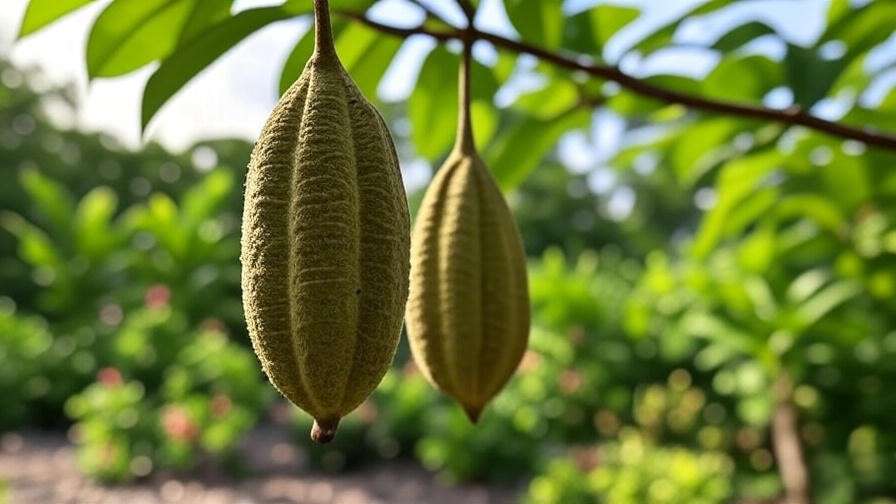
This tree’s cultural significance extends beyond its beauty. In rural communities, it’s a gathering spot for shade and storytelling, while its wood is valued for furniture and its pods for livestock feed. 🌍
1.2 Why Grow a Guanacaste Tree?
Planting a guanacaste tree offers numerous benefits for homeowners and the environment:
- Shade and Comfort: Its wide canopy creates a natural umbrella, perfect for cooling backyards or patios.
- Aesthetic Appeal: Adds tropical elegance with its lush foliage and distinctive pods.
- Environmental Impact: Nitrogen-fixing roots enhance soil health, and the tree sequesters significant carbon.
- Wildlife Support: Attracts birds, bees, and butterflies, boosting local biodiversity.
- Practical Uses: Ideal for windbreaks, livestock shade, or ornamental landscaping.
However, challenges include its large size, which requires ample space, and its potential to become invasive in non-native regions. Always check local regulations before planting.
Expert Tip: “The guanacaste tree is a fantastic choice for sustainable landscaping, but its size demands careful planning,” says Dr. Maria Lopez, a tropical arborist with 20 years of experience. Consult your local agricultural extension to ensure it’s suitable for your area. 🐝
2. Preparing to Plant Your Guanacaste Tree 🌞
2.1 Choosing the Right Location
The guanacaste tree thrives in tropical or subtropical climates (USDA zones 10-12), where temperatures rarely dip below 50°F. Here’s how to pick the perfect spot:
- Sunlight: Full sun (6-8 hours daily) for optimal growth.
- Space: Allow 30-50 feet of clearance to accommodate its massive canopy and root system.
- Soil: Prefers well-draining, loamy soil with a pH of 5.5-7.5. Avoid heavy clay or waterlogged areas.
- Proximity: Plant at least 20 feet from buildings, sidewalks, or underground utilities to prevent root damage.
Test your soil’s drainage by digging a 12-inch hole, filling it with water, and ensuring it drains within 2-3 hours. If drainage is poor, consider raised beds or soil amendments.
2.2 Sourcing Quality Guanacaste Seeds or Saplings
Quality planting material is crucial for success. Here’s how to source responsibly:
- Seeds: Purchase from reputable suppliers or collect from mature trees (with permission). Scarify seeds by nicking the hard coat or soaking them in warm water for 24 hours to boost germination.
- Saplings: Choose healthy nursery saplings with strong stems, vibrant leaves, and no signs of pests or disease.
- Regulations: In non-native regions like Florida or Hawaii, verify that planting guanacaste trees is permitted to avoid ecological issues.
Example: Costa Rican nurseries like La Garita Nursery offer certified guanacaste saplings suited for coastal planting, ensuring robust growth. 🌴
3. Planting Your Guanacaste Tree 🌱
3.1 Step-by-Step Planting Guide
Timing and technique are key to establishing a healthy guanacaste tree. Follow these steps:
- Timing: Plant during the early rainy season (spring or early summer) to support root growth.
- Prepare Seeds: Soak scarified seeds in lukewarm water for 24 hours to soften the coat.
- Dig the Hole: Make it twice as wide and as deep as the root ball (typically 2-3 feet for saplings).
- Planting: Place the sapling or seed so the root collar is level with the soil surface. Backfill with a mix of native soil and compost.
- Watering: Water deeply immediately after planting, ensuring the soil is moist but not soggy.
- Staking: For saplings, use stakes to stabilize against wind for the first year, but avoid tight ties that damage the trunk.
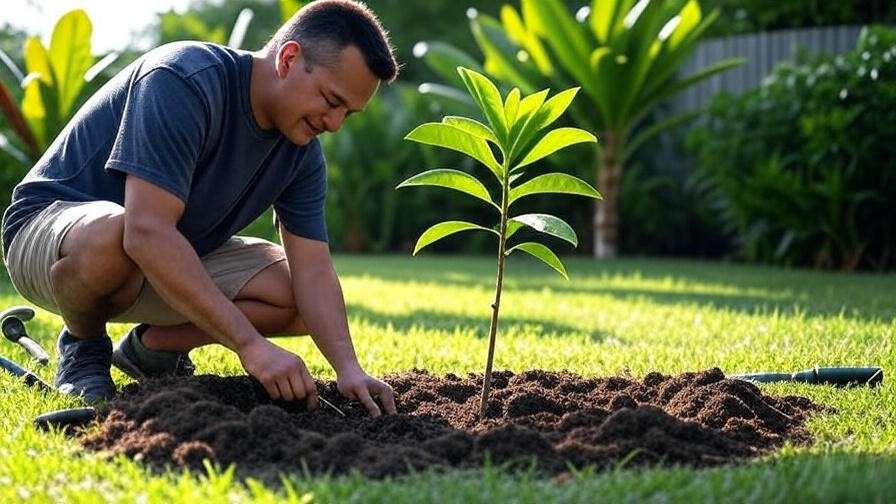
3.2 Soil and Fertilization Tips
Guanacaste trees benefit from nutrient-rich soil during establishment:
- Amendments: Mix in organic compost or aged manure to improve soil structure and fertility.
- Fertilizer: Apply a balanced, slow-release fertilizer (e.g., 10-10-10 NPK) at planting and every 3 months for the first year.
- Caution: Avoid over-fertilizing, which can cause weak, leggy growth. Always follow package instructions.
Pro Insight: Dr. Juan Castillo, a tropical ecologist, advises, “Test your soil annually to monitor nutrient levels and adjust fertilization for optimal guanacaste growth.” 🧑🌾
4. Caring for Your Guanacaste Tree 🌼
4.1 Watering Needs
Proper watering ensures a strong start and long-term health:
- Young Trees: Water deeply 2-3 times per week for the first year, providing 1-2 inches of water each time. Use a soaker hose for even distribution.
- Mature Trees: Once established, guanacaste trees are drought-tolerant but benefit from deep watering during prolonged dry spells (every 2-3 weeks).
- Warning Signs: Yellowing leaves or soggy soil may indicate overwatering; adjust to prevent root rot.
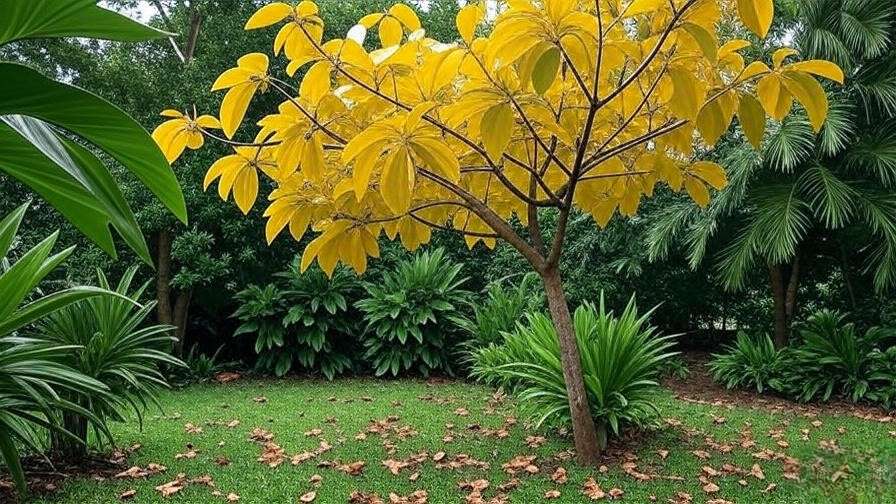
4.2 Pruning and Maintenance
Regular pruning keeps your guanacaste tree healthy and safe:
- Timing: Prune in late winter or early spring before new growth begins.
- Goals: Remove dead, damaged, or crossing branches to shape the canopy and improve air circulation.
- Tools: Use sterilized pruning shears or loppers to prevent disease spread.
- Safety: For mature trees, hire certified arborists due to their height and branch weight.
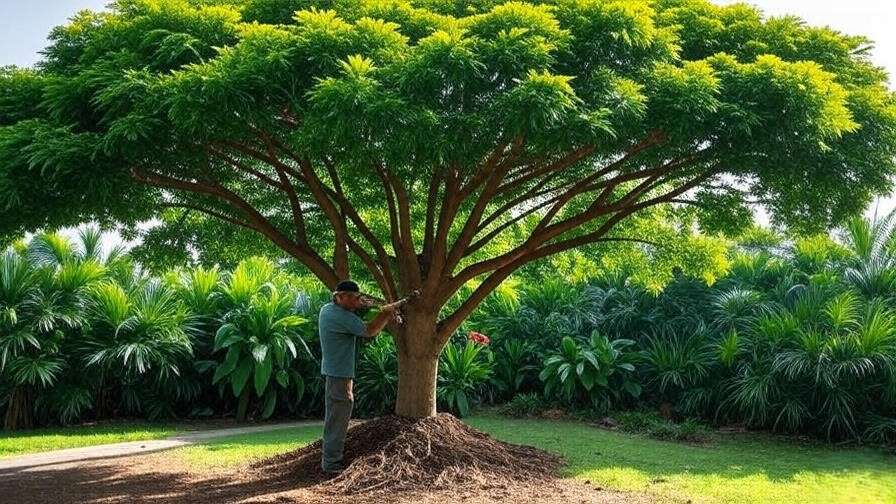
4.3 Pest and Disease Management
While generally hardy, guanacaste trees can face pest and disease challenges:
- Pests: Watch for leaf-eating beetles, scale insects, or caterpillars. Apply neem oil or insecticidal soap for organic control.
- Diseases: Root rot (from poor drainage) and fungal leaf spots are common. Improve soil drainage and apply fungicides if needed.
- Monitoring: Inspect leaves and roots monthly, especially during wet seasons, to catch issues early.
Quick Tip: Introduce beneficial insects like ladybugs to naturally reduce pest populations without chemicals. 🐞
5. Troubleshooting Common Guanacaste Tree Problems 🚨
Even with the best care, guanacaste trees can face challenges. Here’s how to identify and resolve common issues to keep your tree thriving.
5.1 Slow Growth or Wilting
- Causes:
- Poor soil quality lacking nutrients.
- Insufficient or inconsistent watering.
- Compacted soil or inadequate sunlight.
- Solutions:
- Conduct a soil test to check for nutrient deficiencies (contact your local agricultural extension for testing services).
- Adjust watering to ensure deep, consistent moisture for young trees.
- Ensure the tree receives full sun; remove any shading obstacles.
- Aerate compacted soil to improve root access to water and nutrients.
Example: A gardener in Panama noticed their guanacaste sapling wilting despite regular watering. A soil test revealed low potassium levels, which were corrected with a targeted fertilizer, reviving growth within weeks. 🌱
5.2 Invasive Root Systems
- Issue: The guanacaste tree’s extensive root system can damage sidewalks, driveways, or foundations if planted too close to structures.
- Prevention:
- Plant at least 20-30 feet from buildings or paved surfaces.
- Install root barriers (available at garden centers) during planting to guide roots downward.
- Regularly monitor root spread, especially in urban settings.
- Solution for Existing Trees: Consult a professional arborist to assess and manage invasive roots without harming the tree.
5.3 Leaf Drop or Discoloration
- Causes:
- Natural seasonal shedding (guanacaste trees are deciduous in some regions).
- Pest infestations (e.g., caterpillars or scale insects).
- Fungal infections from excessive moisture or poor air circulation.
- Action Plan:
- Confirm if leaf drop is seasonal (common in dry seasons).
- Inspect for pests and treat with organic solutions like neem oil.
- For fungal issues, improve canopy airflow through pruning and apply a copper-based fungicide if necessary.
- Contact a local extension service for a precise diagnosis if symptoms persist.
Case Study: A Florida homeowner noticed yellowing leaves on their 5-year-old guanacaste tree. After consulting an arborist, they improved irrigation practices and added mulch, restoring the tree’s vibrancy within a month. 🌟
6. Long-Term Care for a Mature Guanacaste Tree 🌳
Once your guanacaste tree reaches maturity (around 5-10 years), it requires less intensive care but still benefits from consistent maintenance to ensure longevity and health.
6.1 Supporting Growth and Health
- Mulching: Apply a 2-4 inch layer of organic mulch (e.g., wood chips or bark) around the base, keeping it 6 inches from the trunk to prevent rot. Mulch retains moisture, suppresses weeds, and regulates soil temperature.
- Annual Checkups: Inspect the tree for structural weaknesses, such as cracked branches or storm damage, especially after heavy winds or rain.
- Fertilization: Shift to a low-nitrogen fertilizer (e.g., 5-10-10 NPK) once every 1-2 years to maintain health without encouraging excessive growth.
- Watering: Mature trees are drought-tolerant but benefit from deep watering (1-2 times per month) during extended dry periods.
Pro Tip: Use a moisture meter to check soil conditions before watering mature trees to avoid overhydration. 💧
6.2 Environmental Impact and Sustainability
A mature guanacaste tree is a powerhouse for environmental and community benefits:
- Biodiversity: Its canopy attracts birds (e.g., parrots, toucans), bees, and butterflies, creating a thriving ecosystem in your backyard.
- Carbon Sequestration: A single mature guanacaste tree can absorb up to 48 pounds of CO2 annually, contributing to climate change mitigation.
- Soil Health: Nitrogen-fixing roots naturally enrich the soil, benefiting nearby plants.
- Community Value: Enhances property aesthetics and increases resale value by up to 15%, according to landscaping studies.
Expert Quote: “A well-maintained guanacaste tree is more than a plant—it’s a legacy for future generations, supporting both nature and community,” says Dr. Juan Castillo, a tropical ecologist with over 15 years of research in Central American flora. 🌍
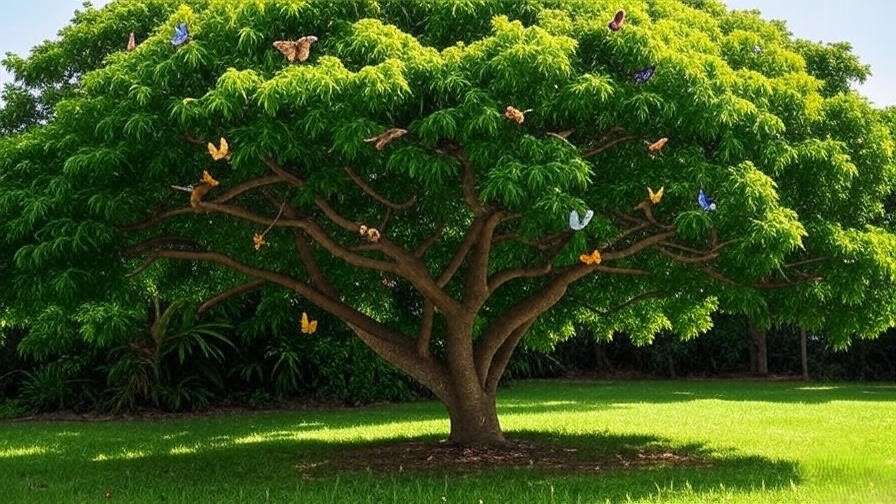
7. FAQs About Guanacaste Tree Care ❓
To address common reader questions and boost SEO with “People Also Ask” visibility, here are answers to frequently asked questions about guanacaste tree care:
- How fast does a guanacaste tree grow?
Under ideal conditions (full sun, well-draining soil, and consistent water), it can grow 5-10 feet per year, reaching 30-50 feet within 5-7 years. - Can I grow a guanacaste tree in a small yard?
Due to its massive size (up to 100 feet wide), it’s not recommended for small yards. Consider dwarf tropical trees like frangipani or bottlebrush as alternatives. - Is the guanacaste tree invasive?
In non-native regions like parts of Florida or Australia, it can spread rapidly if not managed. Check with local authorities or extension services before planting. - How long does it take to produce seed pods?
Typically 5-7 years after planting, depending on climate and care. Pods are a valuable resource for crafts or animal feed. - What’s the best way to propagate a guanacaste tree?
Seeds are the most reliable method, with scarification and soaking improving germination rates. Cuttings are possible but require advanced horticultural skills.
8. Conclusion: Your Journey to a Thriving Guanacaste Tree 🌈
Growing a guanacaste tree is a rewarding journey that blends beauty, sustainability, and ecological impact. From selecting the perfect planting spot to nurturing a mature tree that shades your backyard and supports local wildlife, this guide provides everything you need to succeed. By following these expert-backed steps—sourcing quality saplings, planting with care, and maintaining long-term health—you’ll create a vibrant, thriving guanacaste tree that stands as a testament to your gardening dedication.
Ready to start? Share your guanacaste tree experiences in the comments below, or reach out to a local arborist for personalized advice. For more tree care tips, explore our guides on tropical landscaping or sustainable gardening. Your backyard oasis awaits! 🌴
Bonus Resource: Download our free guanacaste tree care checklist (available on our website) to keep your tree thriving year-round. 📝

